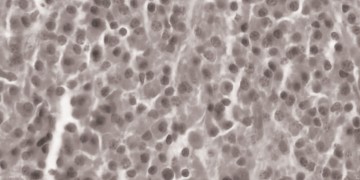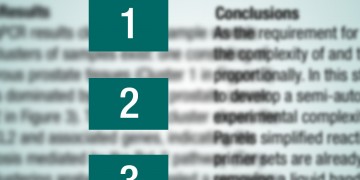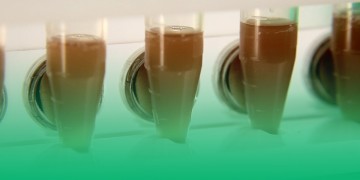
Flow Cytometry: Basic Definitions
It’s always good to get the basics straight. Here, we’ve defined some flow cytometry terms that might have eluded you.

10 Tips and Tricks for Designing Multicolor Flow Cytometry Panels
Multiplexing an assay comes with its own complications in addition to the benefits it affords. Designing multicolor panels for flow cytometry analysis entails several considerations for a successful outcome. Here is a list of tips that can help you succeed in setting up and running a multicolor flow cytometry panel.

Protocol: Preparation of Cells for Flow Cytometry
Harvesting of tissue culture cells could be challenging. Here is an easy protocol for efficient harvesting of cells for flow cytometry analysis.

Get Published! 10 Tips for Getting Published Successfully
When you have finished all your experiments and have the paper ready in your head, you need to consider several factors before sending it for publication. Here are some tips that Bio-Rad’s PrimePCR™ PCR Primers and Assays group put together for getting the paper published successfully.

7 Tips for Choosing the Right Antibody for Western Blotting
Which antibody is the best to obtain a definitive and conclusive answer for my questions? How do I choose the best antibody for my purpose? These are standard questions that scientists ask time and time again. Here are a few tips to choose the most appropriate antibody for your specific application.

SureBeads™ Magnetic Beads Standard Immunoprecipitation Protocol
Immunoprecipitation (IP) is a commonly used protocol for concentrating and purifying proteins using specific antibodies and magnetic beads. Here is a simple IP protocol using Bio-Rad’s SureBeads Magnetic Beads.

Troubleshooting the Bio-Plex® 200 Multiplex Immunoassay System: Device Time-Out
A “device time-out” message on the Bio-Plex® 200 System occurs when the instrument’s needle or probe cannot move correctly. Watch this video for several troubleshooting steps to try when this message occurs.

Troubleshooting the Bio-Plex® 200 Multiplex Immunoassay System: HTF Alarm
The high-throughput fluidics (HTF) alarm on the Bio-Plex® 200 System indicates a problem with the instrument’s sheath fluid delivery system. See the actions needed to quickly resolve potential issues with this system and get back to your research!

Troubleshooting the Bio-Plex® 200 Multiplex Immunoassay System: Device Failed to Pressurize
During calibration of your Bio-Plex® 200 System, you may receive a “failed to pressurize message.” In this short video, get some easy fixes for the most common issues prompting this message.

How to Remove Stripes from a Gel Image — ChemiDoc™ Imager Filter Alignment
Usually when stripes appear on a gel image produced with a ChemiDoc XRS+ or ChemiDoc MP Imaging System, a misaligned filter is the cause. Learn the simple steps to correct this issue with this video from Bench Partners.
